Ditapis dengan

TRS No.432.Standardized Hight Currant Solid Targets for Cylotron Production o…
Radioisotopes produced by cyclotrons, and their corresponding radiopharmaceuticals, have been shown to be extremely valuable in basic medical research, disease diagnosis and radiotherapy treatment. More than 300 cyclotron facilities exist worldwide and the number is growing. A number of IAEA Member States have acquired cyclotrons to produce radioisotopes for nuclear medicine and several others …
- Edisi
- -
- ISBN/ISSN
- 92–0–109304–7
- Deskripsi Fisik
- 82 pages
- Judul Seri
- -
- No. Panggil
- 616.075 IAE S
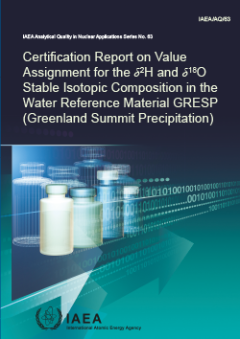
Certification Report on Value Assignment for the d2H and d18O Stable Isotopic…
Thousands of laboratories worldwide are performing analyses of the stable isotopic composition of elements for a large variety of scientific applications, ranging from hydrology, geology and climate studies to agriculture, biology or medicine. These laboratories may develop and validate new analytical methods, study the adherence to legislative rules or provide services to other organizations. …
- Edisi
- -
- ISBN/ISSN
- -
- Deskripsi Fisik
- 32 hal
- Judul Seri
- -
- No. Panggil
- 570.7 IAE C
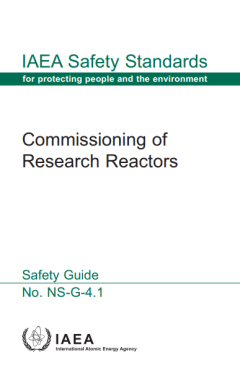
Safety Standards-Safety Guide:Commisioning of Research Reactors(NS-G-4.1)
This Safety Guide was developed under the IAEA programme for safety standards for research reactors, which covers all the important areas of research reactor safety. It supplements and elaborates upon the safety requirements for the commissioning of research reactors that are established in the IAEA Safety Requirements publication on the Safety of Research Reactors [1]. It also relates to the I…
- Edisi
- -
- ISBN/ISSN
- -
- Deskripsi Fisik
- -
- Judul Seri
- -
- No. Panggil
- 621.483 IAE C
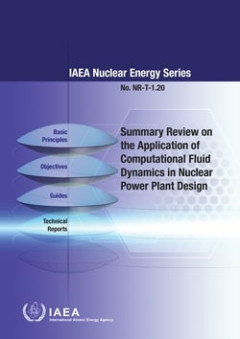
Summary Review on the Application of Computational Fluid Dynamics in Nuclear …
The IAEA’s statutory role is to “seek to accelerate and enlarge the contribution of atomic energy to peace, health and prosperity throughout the world”. Among other functions, the IAEA is authorized to “foster the exchange of scientific and technical information on peaceful uses of atomic energy”. One way this is achieved is through a range of technical publications including the IAEA…
- Edisi
- -
- ISBN/ISSN
- 978–92–0–100321–8
- Deskripsi Fisik
- 80 p
- Judul Seri
- IAEA nuclear energy series
- No. Panggil
- 621.039.5:532 IAE s
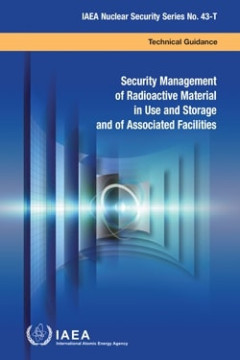
Security Management of Radioactive Material in Use and Storage and of Associa…
The IAEA Nuclear Security Series provides international consensus guidance on all aspects of nuclear security to support States as they work to fulfil their responsibility for nuclear security. The IAEA establishes and maintains this guidance as part of its central role in providing nuclear security related international support and coordination. The IAEA Nuclear Security Series was launched in…
- Edisi
- -
- ISBN/ISSN
- 978–92–0–118321–7
- Deskripsi Fisik
- 68 p
- Judul Seri
- IAEA nuclear security series
- No. Panggil
- 620.267:343.852 IAE s
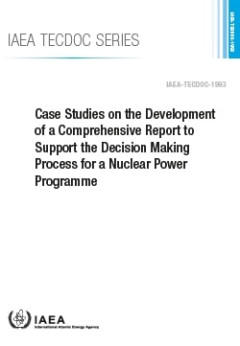
Case Studies on the Development of a Comprehensive Report to Support the Deci…
Launching a nuclear power programme is the sovereign decision of a country and constitutes a major undertaking requiring careful planning, preparation and investment in time, institutions, financing and human resources. The IAEA has developed a three phase methodology to support the development of the national infrastructure required for a nuclear power programme in a Member State. Known as …
- Edisi
- -
- ISBN/ISSN
- 978-92-0-101922-6
- Deskripsi Fisik
- 74 p
- Judul Seri
- International Atomic Energy Agency, 2022
- No. Panggil
- 621.483 IAE c
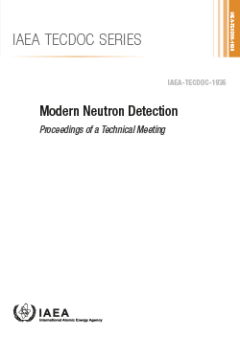
Modern Neutron Detection - Proceedings of a Technical Meeting (IAEA TECDOC No…
This publication presents the outcome of a technical meeting on modern neutron detection. The objective of the meeting was to bring together experience and opinions from experts from various fields in which neutron detection is used, and to produce this publication that will cover the current state of the art in neutron detection and provide a medium-term outlook on technologies in the field. T…
- Edisi
- -
- ISBN/ISSN
- 978-92-0-126520-3
- Deskripsi Fisik
- 362 Hal, 15.96 MB
- Judul Seri
- -
- No. Panggil
- 539.77 IAE M

IAEA - TECDOC Series No. 1612 : Quality Control of Pesticide Products
In light of an established need for more efficient analytical procedures, this publication, which documents the findings of an IAEA coordinated research project (CRP) on “Quality Control of Pesticide Products”, simplifies the existing protocol for pesticide analysis while simultaneously upholding existing standards of quality. This publication includes both a report on the development work …
- Edisi
- -
- ISBN/ISSN
- 978-92-0-104909-4 / 1011-4289
- Deskripsi Fisik
- 241 p
- Judul Seri
- -
- No. Panggil
- 632.95 IAE Q

Benchmarks of Fuel Burnup and Material Activation Computational Tools Against…
Research reactors are powerful tools that contribute to scientific and technological progress worldwide. They are used for research and development in a wide variety of fields, in capacity building in nuclear science and technology, to produce radioisotopes crucial for medical and industrial applications, to support the development of national nuclear infrastructure, and in many other research …
- Edisi
- -
- ISBN/ISSN
- 978-92-0-101222-7
- Deskripsi Fisik
- 276 p
- Judul Seri
- IAEA TECDOC series
- No. Panggil
- 621.483 IAE b
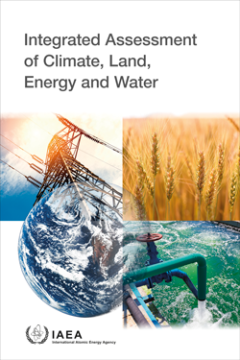
Integrated Assessment of Climate, Land, Energy and Water
This publication presents the findings of an IAEA Coordinated Research Project (CRP) on the development and application of the integrated climate, land, energy and water (CLEW) framework. Together with other UN partners, the IAEA has developed this framework in response to global challenges such as ensuring universal access to food, energy and water, to achieve UN Sustainable Development Goals.…
- Edisi
- -
- ISBN/ISSN
- 978-92-0-113720-3
- Deskripsi Fisik
- 76 Pages
- Judul Seri
- -
- No. Panggil
- 303.4 IAE I
 Karya Umum
Karya Umum  Filsafat
Filsafat  Agama
Agama  Ilmu-ilmu Sosial
Ilmu-ilmu Sosial  Bahasa
Bahasa  Ilmu-ilmu Murni
Ilmu-ilmu Murni  Ilmu-ilmu Terapan
Ilmu-ilmu Terapan  Kesenian, Hiburan, dan Olahraga
Kesenian, Hiburan, dan Olahraga  Kesusastraan
Kesusastraan  Geografi dan Sejarah
Geografi dan Sejarah